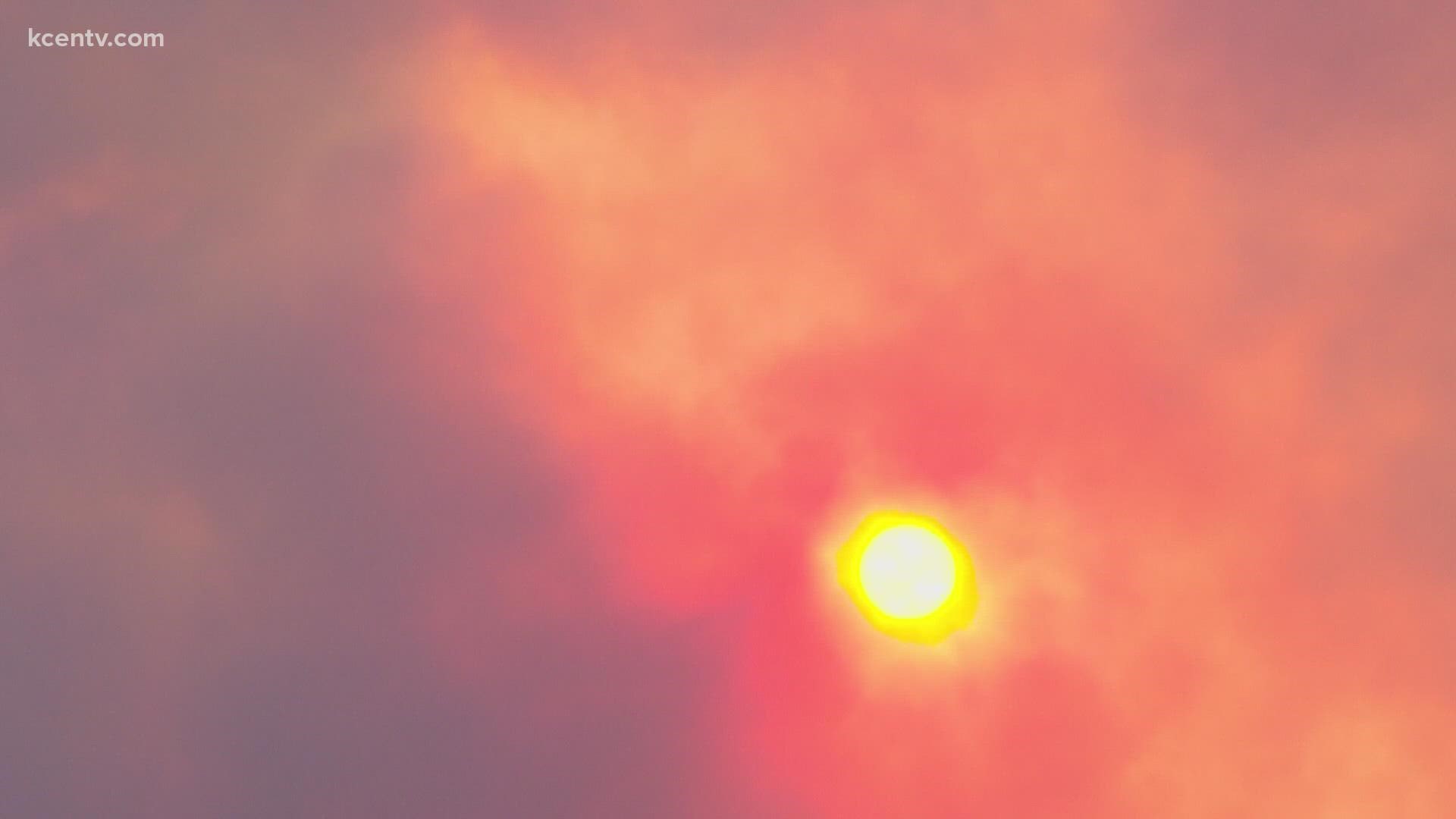FORT HOOD, Texas — The day after the fire on Fort Hood's range burned its way off post and threatened homes in the town of Flat, Fort Hood officials held a press conference to explain the situation to local media. The fire, which is officially called the "Crittenberg Complex Fire", was no longer a danger to people in Flat and crews were constantly working to contain it.
On Monday, officials touted the steps they've taken in the past to keep fires from escalating. As of Wednesday, Fort Hood still couldn't explain those steps.
Fort Hood Garrison Commander Colonel Chad Foster told media they believed the fires were started by live fire exercises involving "small arms fire and some mortars". He assured media the fire was not started by a controlled burn. Foster said the situation could have been even worse if Fort Hood had not been proactive early on.
"We have done a lot of things over the last few years to mitigate the risk of fire and potential damage of fires breaking out as a result of our live fire training on the instillation," Foster said. "I'll tell you right now, if we had not done those things over the last couple years this situation had the potential to get a lot worse than what it is."
Foster then said Fort Hood had done 35,688 acres of controlled burns on the range in order to preemptively prevent fire since 2020. He said the post maintained 855 miles of fire breaks over the last year. A fire break is a strip of land where everything flammable has been removed in order to stop a fire from passing.
Over the next two days, 6 News asked Fort Hood to explain where those fire breaks were located, and explain where and when those controlled burns took place, to provide context for how these measures helped. 6 News also asked for a map of fire breaks on the range.
On Wednesday, after exchanging emails for more than a day, Fort Hood finally declined to provide that information until a later date.
"No maps will be provided this evening. It is our intention to provide you with a detailed explanation for Fort Hood’s fire prevention plan with our key partnered agencies who participated in this plan. These agencies are the U.S. Fish and Wildlife Service and Texas A&M Forest Service," Public Affairs Media Relations Chief Chris Haug said via email. "Coordination with these agencies is ongoing to determine when and how this information will be provided."
This means it is not clear if either the fire breaks or the controlled burns mentioned above were actually positioned in a way that could have protected Flat.
The Crittenberg Complex fire was named because it grew out of control near Fort Hood's Crittenberger road, according to the Texas A&M Forest Service.
Crittenberg road is near the eastern border of the Fort Hood range and less than five miles from the town of Flat.
6 News reached out to Fort Hood to ask if there were fire breaks in place between Crittenberger road and Flat in order to prevent this. 6 News also reached out to the Texas A&M Forest Service for information on those breaks. Spokespersons for both agencies told 6 News they were working on the information before Fort Hood declined to send it.
Fort Hood Fire Chief Andrew Lima also told media Monday that Fort Hood personnel had attempted to set a new fire ahead of the wildfire in order to preemptively destroy any vegetation. They hoped this would stop the wildfire, but Lima said they then lost control of the fire they set as well.
"We did put some fire on the ground to contain the fire and, also, it ran on us. At 1400 (2 p.m.) yesterday... the moisture in the fuel ("fuel" being flammable brush and trees) went down to a 6, and the wind drove that fire...it came out like a train. It was moving on us," Lima said.
It was unclear how much that personnel-created fire contributed to the flames that threatened Flat.
6 News did ask Colonel Foster directly if larger fire breaks could be dug near Flat and Gatesville to help prevent this from happening in the future. Foster couldn't commit to an answer at that time, but said the following:
"That is certainly something we are going to consider. I mean we have to study it again to see what makes sense right? That is something we could do. I can't tell you right now that's exactly what we are going to do. But, whatever we need to do in that area to mitigate that risk, especially because that's obviously a little bit of a vulnerable point right there, just because of where the impact area runs up against the the instillation boundary. (It's) Not necessarily more risky than certain other points but certainly something we need to consider. So we are absolutely going to look at anything and that could be one of them."
Fort Hood officials sent an additional response to 6 News Thursday about our inquiry which stated:
“Fire officials confirmed today that in the area where the fire crossed the Fort Hood boundary near Flat, Texas, preventative measures such as prescribed burns were conducted earlier this year and a fire break was in place,” said Tom Rheinlander, Fort Hood Director of Public Affairs."
Also on KCENTV.com:

